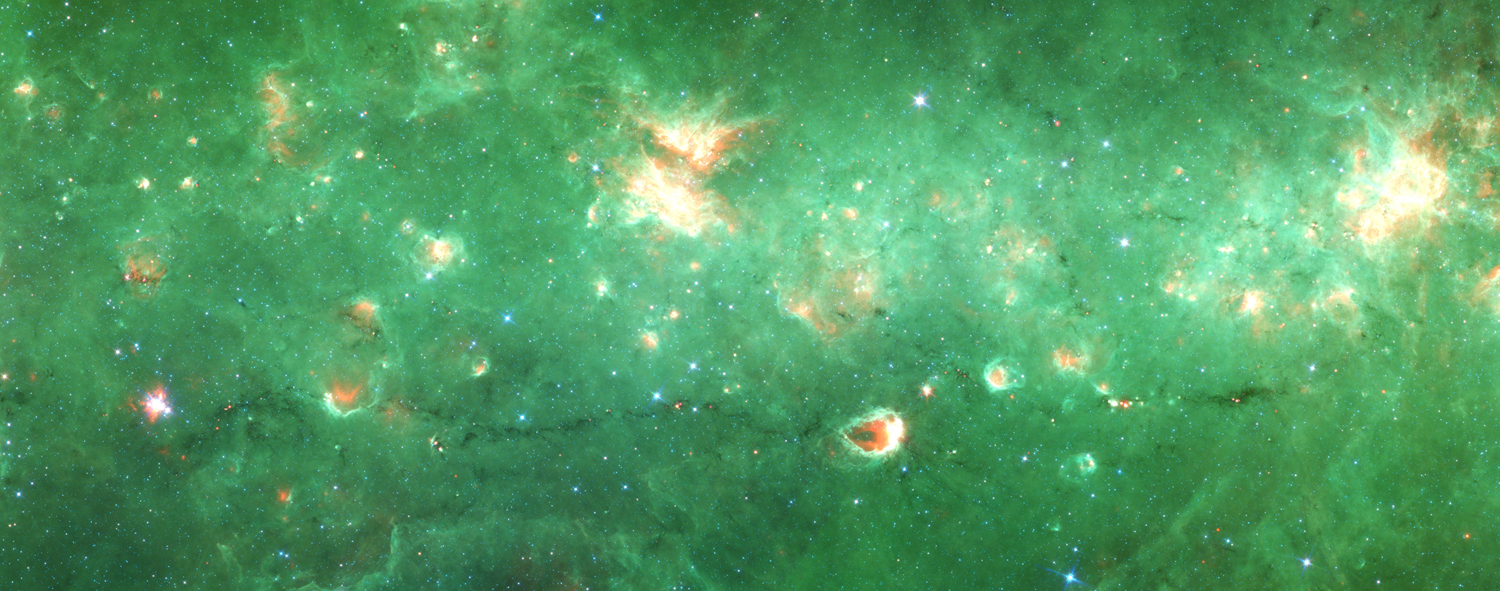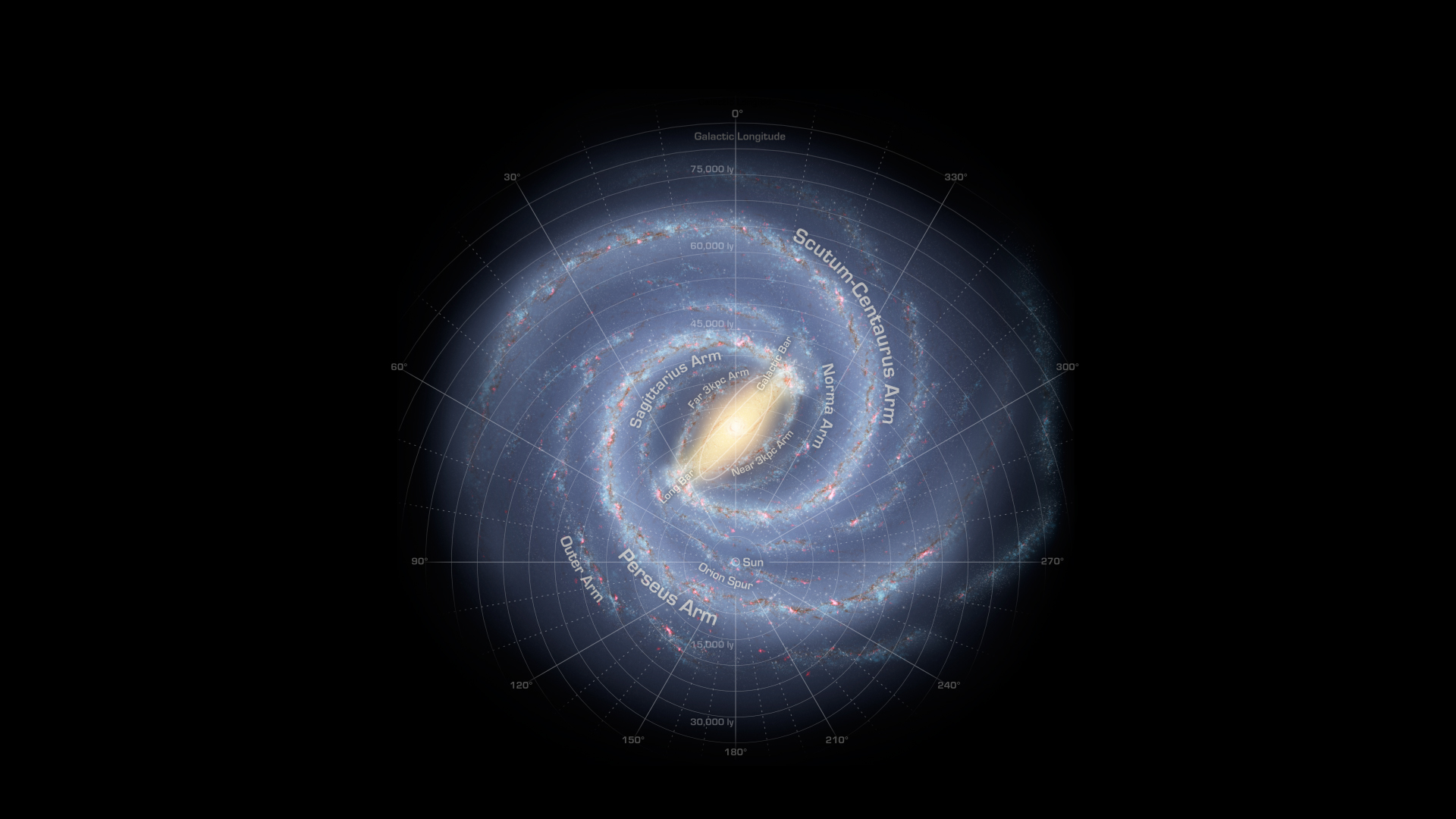New 'Bone' in Milky Way Skeleton Discovered

Astronomers have spotted a new component of the Milky Way galaxy's skeleton — a "bone" of dust and gas that contains about as much material as 100,000 suns.
The newfound Milky Way bone is more than 300 light-years long but just 1 or 2 light-years wide, giving it the appearance of a slender cosmic snake, researchers said.
"This is the first time we've seen such a delicate piece of the galactic skeleton," study lead author Alyssa Goodman, of the Harvard-Smithsonian Center for Astrophysics, said in a statement. "This bone is much more like a fibula — the long skinny bone in your leg — than it is like the tibia, or big thick leg bone."
Goodman announced the find today (Jan. 8) during a press conference at a meeting of the American Astronomical Society in Long Beach, Calif.
She and her team discovered the bone while studying a dust cloud nicknamed "Nessie," which was first spotted in 2010 in data gathered by NASA's Spitzer Space Telescope. Researchers had already identified the central part of the Nessie bone, but the new study determines that the structure is much longer than previously thought — perhaps eight times longer, in fact.
The new discovery helps shed light on the Milky Way's structure, which is tough to divine from within, researchers said.
The Milky Way is a spiral galaxy, with a central bar and two main spiral arms that wrap around its disk. Computer simulations of galaxy formation show networks of such filaments within spiral disks, and the features have been spotted jutting between the arms of other spirals.
Breaking space news, the latest updates on rocket launches, skywatching events and more!
"It's possible that the 'Nessie' bone lies within a spiral arm, or that it is part of a web connecting bolder spiral features," Goodman said. "Our hope is that we and other astronomers will find more of these features, and use them to map the skeleton of the Milky Way in 3D."
Follow SPACE.com on Twitter @Spacedotcom. We're also on Facebook & Google+.

Space.com is the premier source of space exploration, innovation and astronomy news, chronicling (and celebrating) humanity's ongoing expansion across the final frontier. Originally founded in 1999, Space.com is, and always has been, the passion of writers and editors who are space fans and also trained journalists. Our current news team consists of Editor-in-Chief Tariq Malik; Editor Hanneke Weitering, Senior Space Writer Mike Wall; Senior Writer Meghan Bartels; Senior Writer Chelsea Gohd, Senior Writer Tereza Pultarova and Staff Writer Alexander Cox, focusing on e-commerce. Senior Producer Steve Spaleta oversees our space videos, with Diana Whitcroft as our Social Media Editor.

